The ancient cultures of Malays, East Indians, and Chinese, are all present in Georgetown Penang today, and they are what makes this town so rich and vibrant.
Whether you spend your days walking, bike riding, or on a tour bus, you will inevitably come across a mishmash of modern, colonial, and Asian architecture.
In 2007, the UN acknowledged Georgetown’s well preserved historical and cultural heritage by listing it as a UNESCO site in 2008.
Cody and I spent days just walking around Georgetown admiring finely painted and sculpted Chinese temples, British colonial buildings, old tea shops, mosques, and colourful Hindu temples.
There are Chinese temples in little India, Hindu temples in china town, and mosques dotted throughout both areas.
Georgetown is also famous for its street art.
In 2012 the Penang Island Municipal Council hired Lithuanian artist Ernest Zacharevic to create multiple murals around the city. Since then, more visitors have been exploring Georgetown by foot on the lookout for the popular art work. Much of the art work is interactive, allowing you to get in on the fun.
An international competition was also held to find an artistic proposal, and SCULPTUREATWORK, a Malaysian sculpture studio, won the contract. ‘Voices from the People’ is an art exhibition that you can find around the streets of Georgetown.
The sculptures are made of wrought iron, and there are a total of 52 across Georgetown. Some of the works show caricatures explaining the history of Georgetown, and others gossip about certain streets where Chinese men kept their mistresses.
If your chosen method of getting around this charming town is walking, you will pass by several of these humorous pieces.
It is wonderful to see that Penang is supporting a flourishing art scene, even if their main interest is to attract tourism.
Another form of art that we had the pleasure of partaking in was the Penang Pesta Chingay Parade, an incredibly colourful celebration of Chinese culture.
Mythical dragons and lions danced around crowds exciting everyone with their twists, turns, and kung fu moves.
We stood front row center for 2 hours with wide eyes and big smiles while marching bands, singing groups, flag pole bearers, and dancers made their way through the crowd to the end of the parade where we were stationed.
Lion and dragon dances are usually performed during Chinese New Year, and at other Chinese religious, and cultural festivals. The lion dance is performed to scare away evil spirits and to bring good luck to the people in attendance.
If you ever have a chance to attend a lion and dragon dance in your area, I highly suggest that you do. You won’t regret it.
Georgetown is also known for its gastronomy and very lucky for us, we did not miss out being vegan.
The food is as multi-cultural as the people of Georgetown, and as delicious as any food we’ve tried in Southeast Asia, with Laksa being high on my favourites list.
Laksa is possibly Malaysia’s most famous dish. It is a spicy coconut curry noodle soup. It can also be based on sour tamarind, so be sure to ask for specifics. My favourite is the curry coconut broth. It is phenomenal.
Laksa is not traditionally vegan, but there are plenty of restaurants in Georgetown serving up delicious plant based versions.
We also discover nyonya kueh. An accidentally vegan dessert made with coconut milk, rice flour, mung bean, coconut cream, and coconut palm sugar-all steamed, and sweetly served on a banana leaf.
They were .15 cents each. Needless to say we tried every one.
Once our bellies were full, Cody and I would head out for the day to explore the many areas of Georgetown. We visited the reclining Buddha at Wat Chayamangkalaram.
This Thai temple is well known for the reclining Buddha. It is 33 metres long and gold plated. It was beautiful, but I fell in love with the floor tiles more than anything. And of course the nagas guarding the entrance of the temple.
Across the street from the Thai Buddhist temple is another Buddhist temple by the name of Dhammikarama, but this one is Burmese.
In fact it is one of the few Burmese Buddhist temples outside of Myanmar. Religious icons and religious figures can be found all around the compound, as well as this guarded globe.
There is a pretty landscaped garden, and bell tower where you can enjoy the view overlooking the complex. The temple is used daily, and when we visited there were 2 monks blessing visitors with prayers and incantations.
This was a lovely temple to visit with so much to look at.
The last temple that we visited, (and most fitting) was Kek Lok Si Temple.
This Chinese temple is dedicated to the Guan Yin bhodisattva, the goddess of compassion- ‘she who hears the cries of the world’.
This temple is a breathtaking must visit. After taking a lift, and then a short climb through several gift shops, we arrived at a few different temples showcasing all forms of Southeast Asian Buddhism.
There are Buddha statues everywhere you turn, and gorgeous Chinese style rooftops. At the very top we arrived at a gorgeous mammoth statue of Guan Yin, tranquil gardens, and a beautiful pagoda.
Our visit to Kek Lok Si was very memorable, and although we didn’t find a Guan Yin statue at the gift shop, we left with a cute pineapple incense holder!
Our week in Penang flew by, and truthfully, we could have stayed for a few more weeks just enjoying the food and architecture multiple times over. We hope this blog post encourages you to visit Georgetown, because it is pretty groovy.

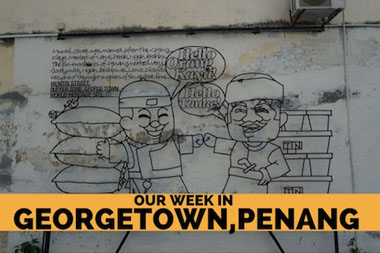
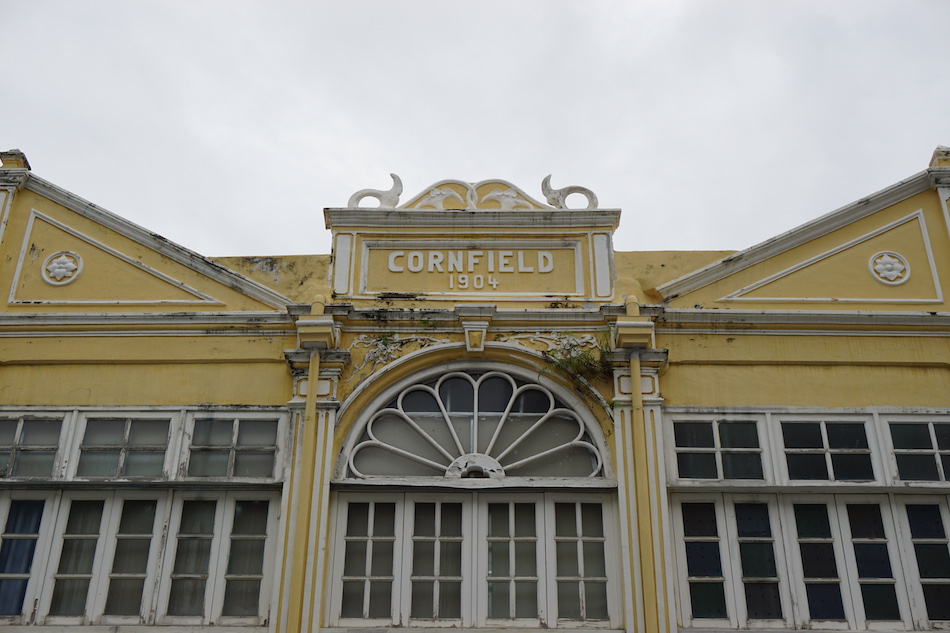
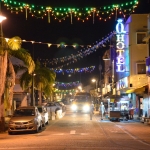
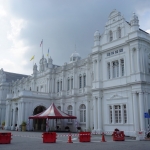
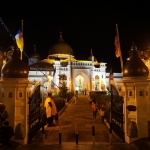
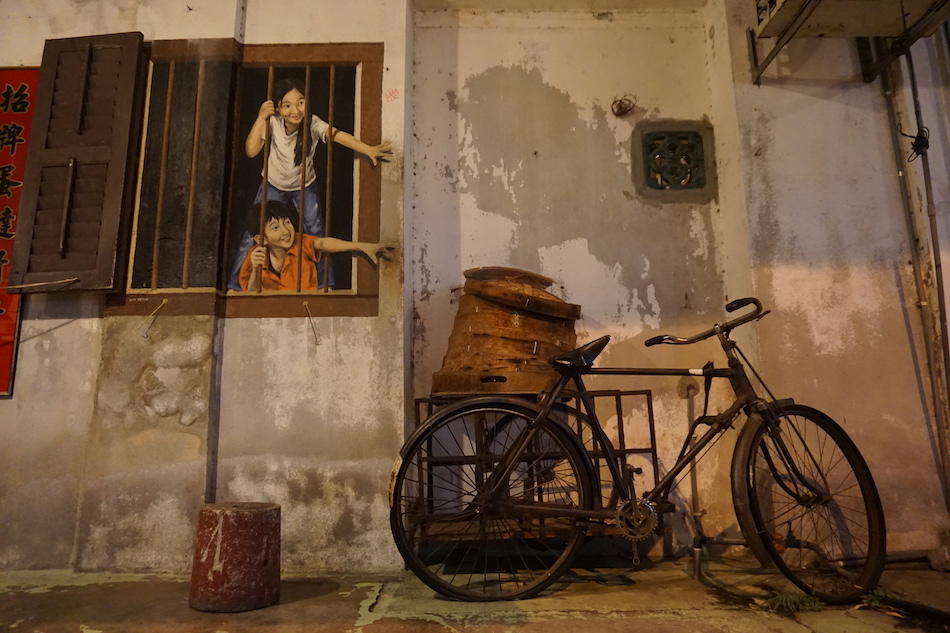
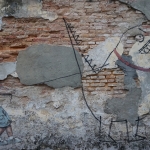
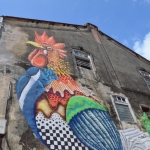
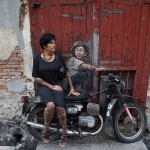
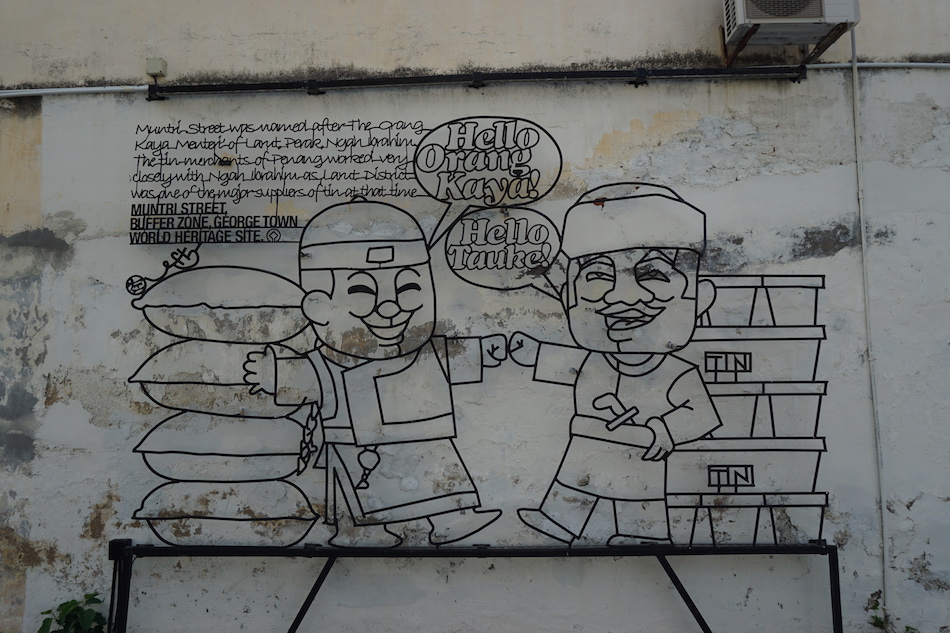
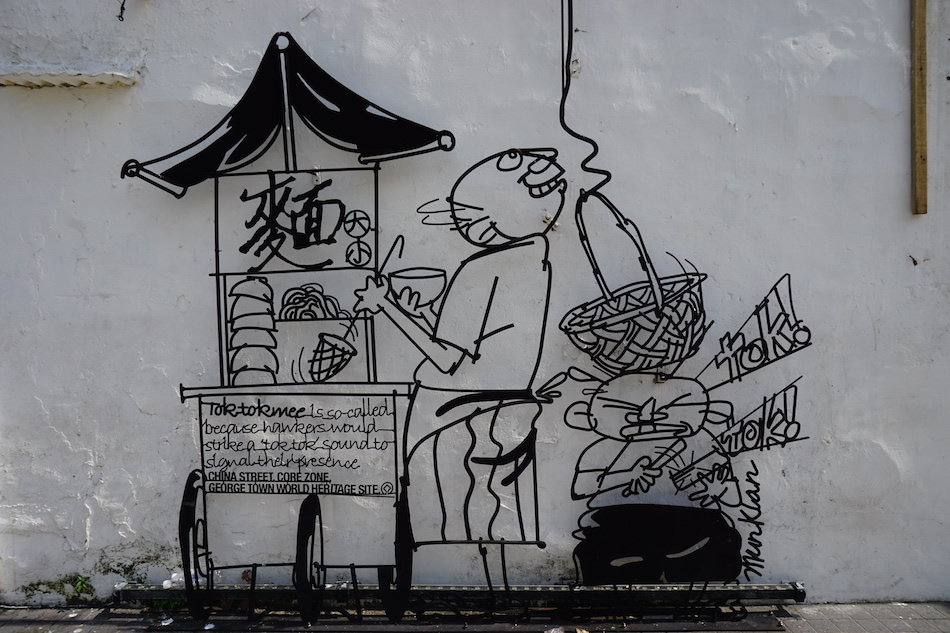
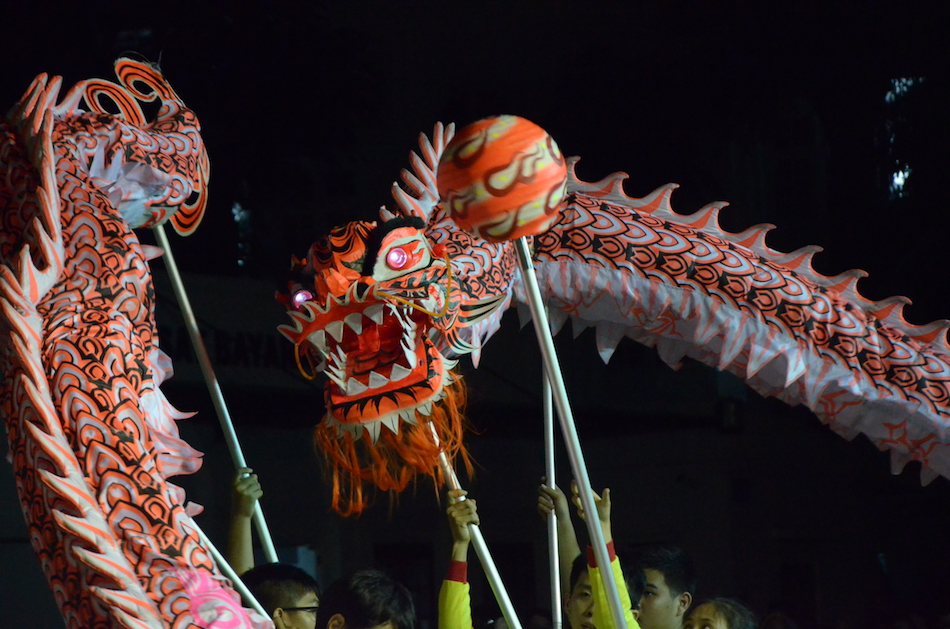
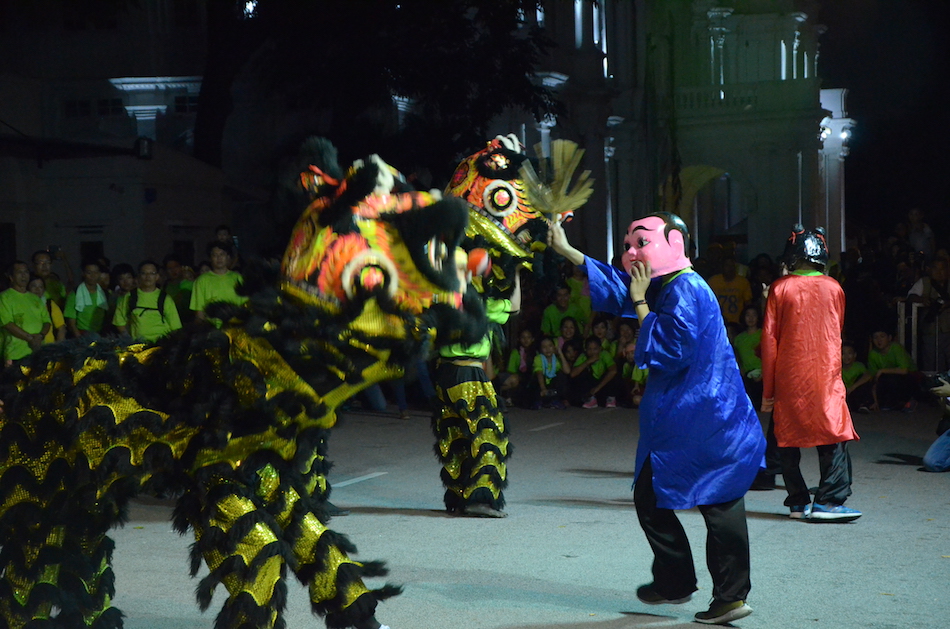
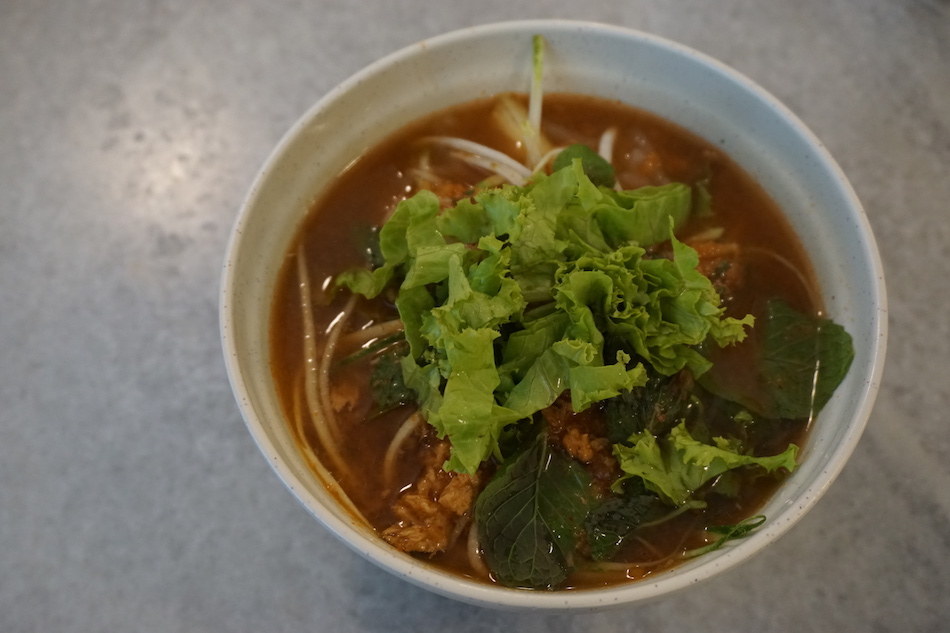
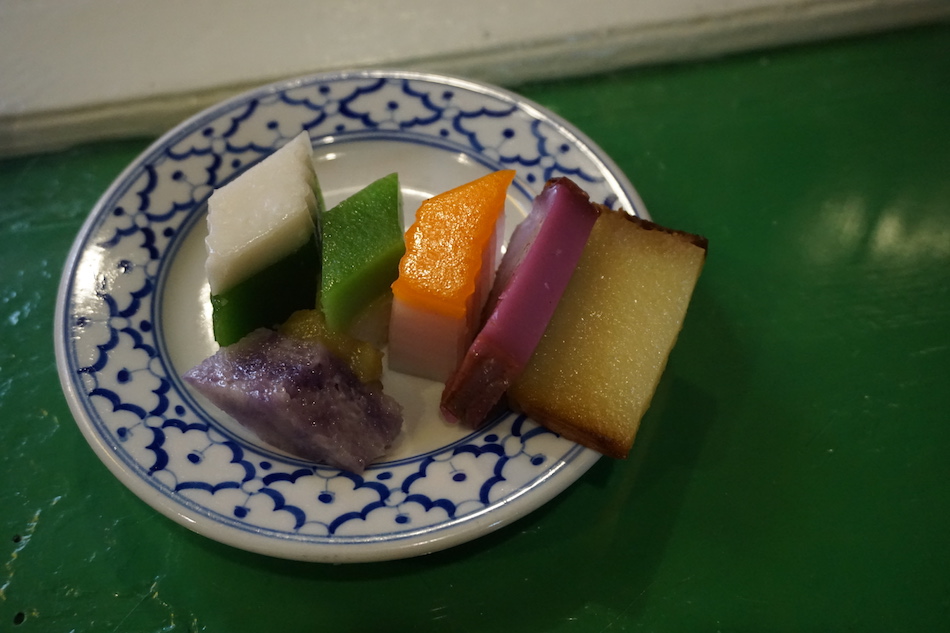
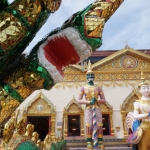
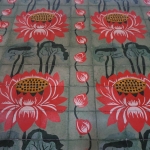
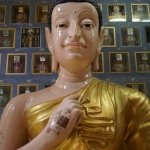
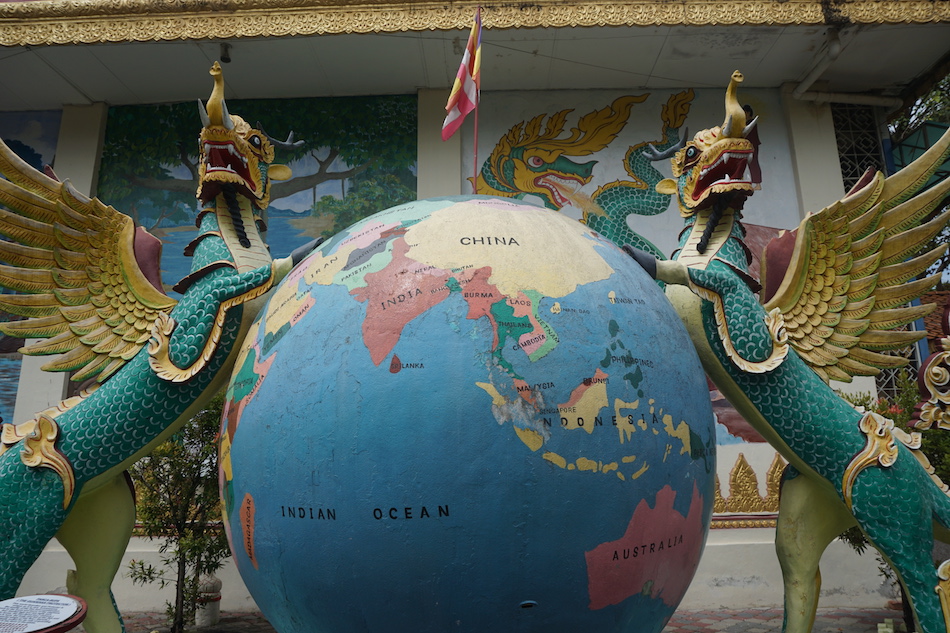
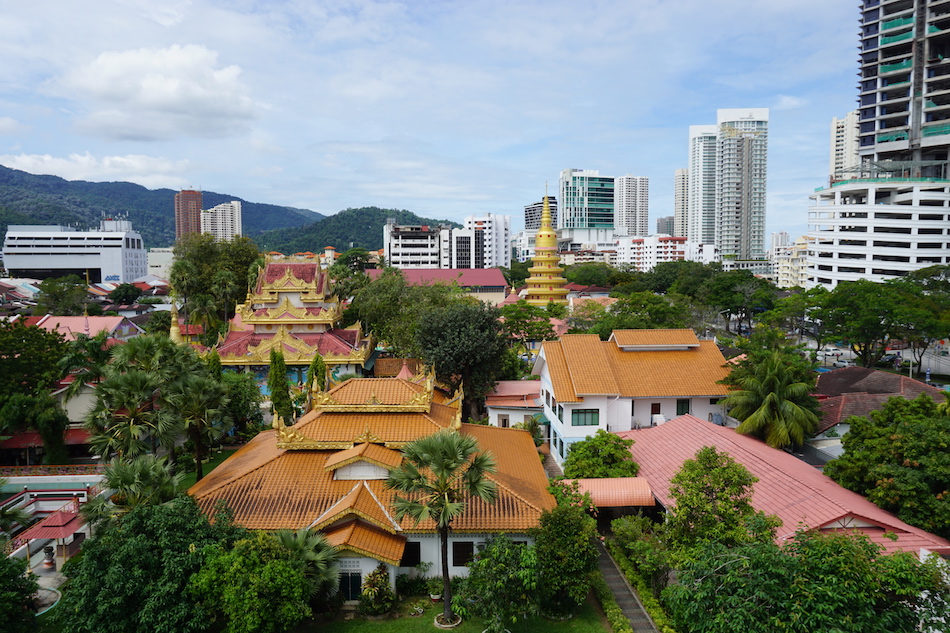
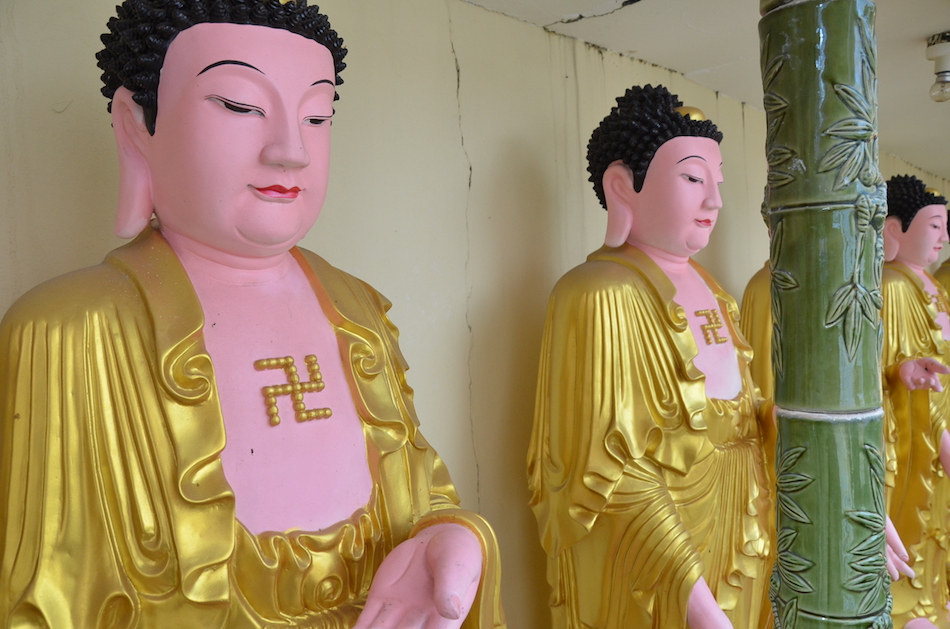
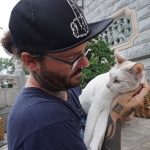
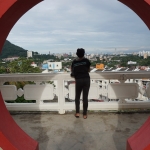
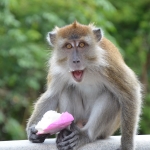
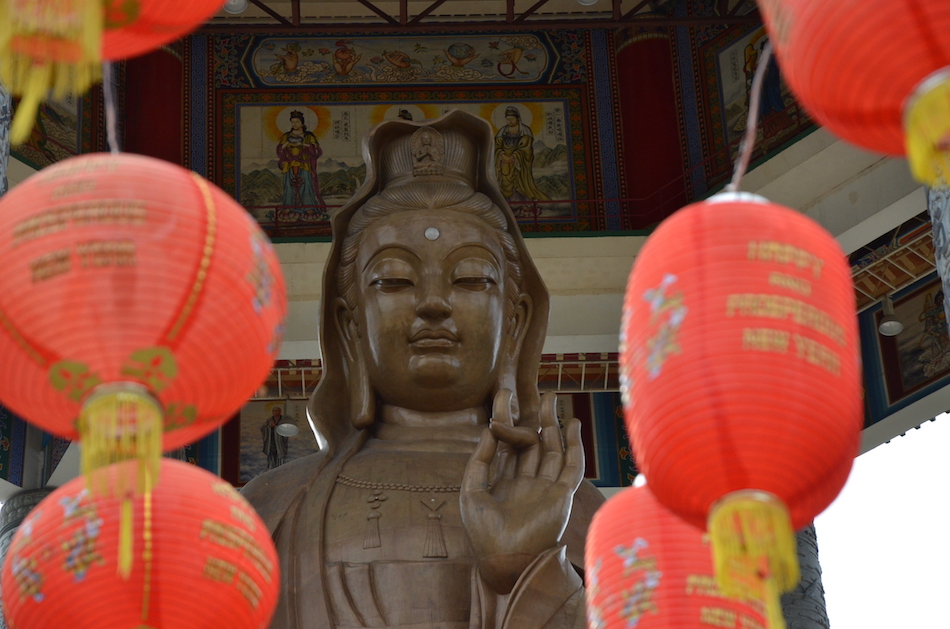
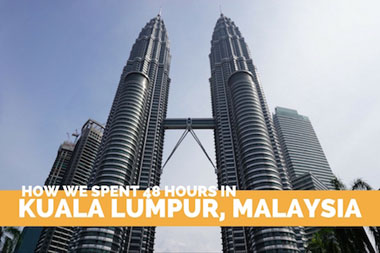
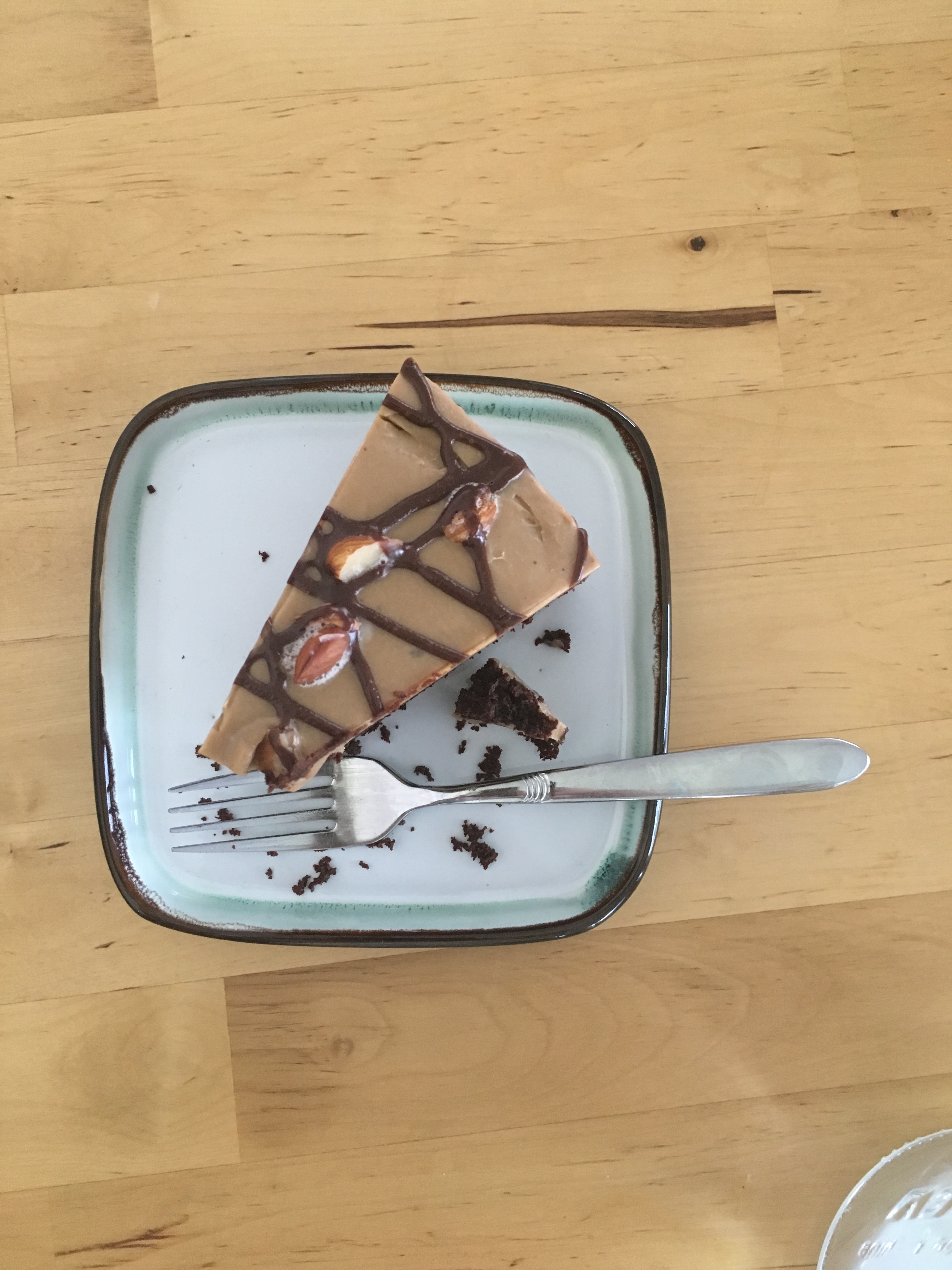
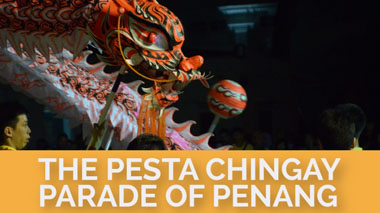
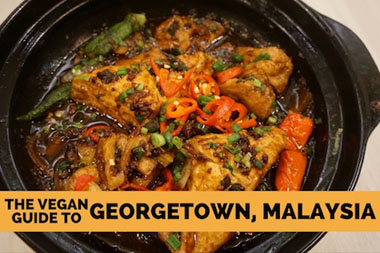
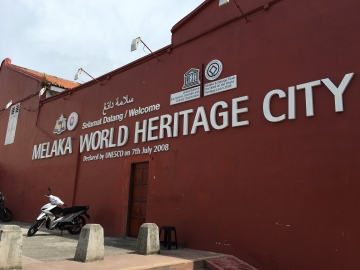
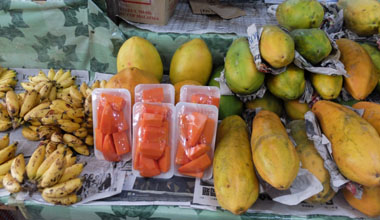
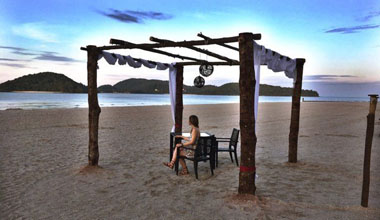
















Loved your blog of Georgetown, Penang…..
So colourful with a wide-spread of places of worship to accommodate all cultures. At .15cents each, I would have ordered all varieties of the ‘nyonya kueh’ as well….gotta have them all…lol